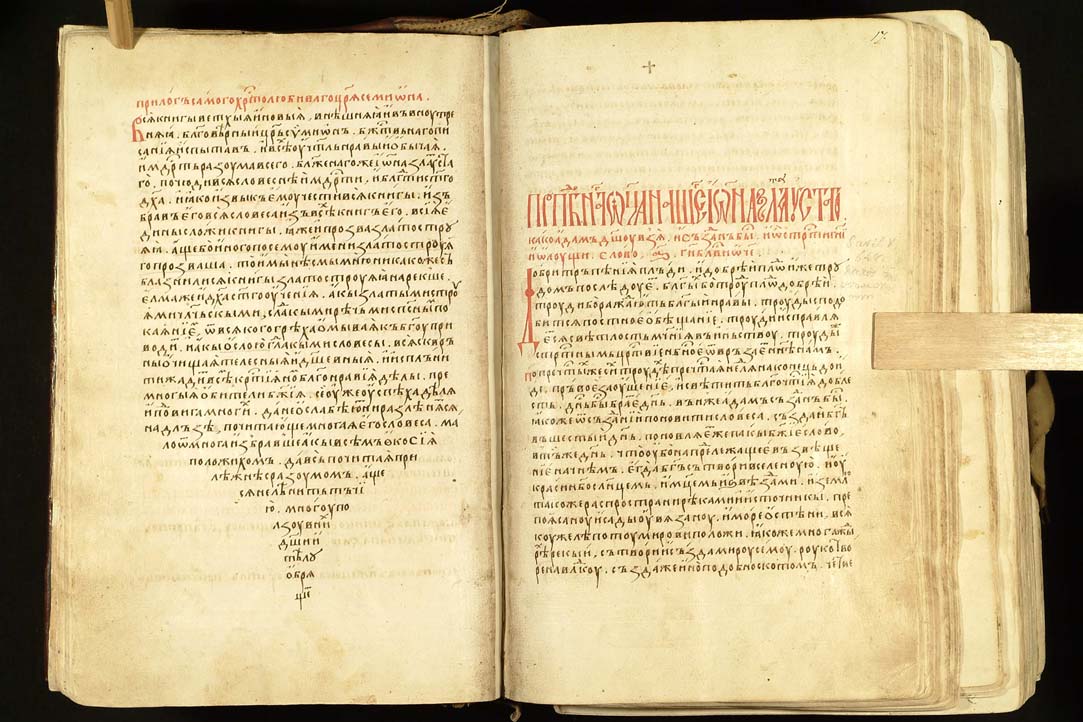About 700 new entries were successfully included in the VERSIONES SLAVICAE database. The database development was resumed in 2018 by Yavor Miltenov at the Institute for Bulgarian Language as part of a project of the Department for History of the Bulgarian Language. In addition to inclusion of new texts, by the end of 2020 a complete editing of almost all records was carried out, beginnings of the Slavonic texts were corrected according to the Old Bulgarian orthography, and
about 400 already cataloged texts were supplemented with new data.
Author Archives: Yavor
Ново начало за Versiones Slavicae
Нови около 700 текста бяха успешно включени в базата данни VERSIONES SLAVICAE. Работата бе подновена през 2018 г. от Явор Милтенов в Института за български език като част от планов проект на Секцията по история на българския език. Освен попълването на новия масив, до края на 2020 г. бе извършена също така цялостна редакция на почти всички записи, нормализация според старобългарския правопис на началата на славянските текстове и допълване с информация на около 400 вече каталогизирани текста.
List of Selected Publications of Prof. Francis Thomson
Prof. Francis J. Thomson is one of the most prominent scholars of our time in the field of medieval Slavic studies. His research is devoted to tracing, analysing and cataloging the Byzantine originals and their corresponding Slavic translations. Thereby the Slavonic tradition again, as in its classical period, is bound with its main source and this makes it possible to evaluate its features and characteristics in the context of the Byzantine-Slavic cultural commonwealth in the Middle Ages.
Since it is difficult to find a list of publications of the famous Belgian medievalist on-line, we decided to offer here a selected bibliography up to 2009. We are indebted to our colleague Maya Petrova for providing most of the materials.
In the coming months we intend to process and include in Versiones Slavicae most of the texts whose identifications are due to Professor Thomson’s publications.
Избрана библиография на проф. Франсис Томсън
Проф. Франсис Томсън е един от най-изтъкнатите слависти на нашето време. Неговите проучвания са свързани с издирване, идентифициране и каталогизиране на византийските оригинали и съответстващите им славянски преводи. С това най-сетне славянската традиция отново, както в класическия си период, бива обвързана със своя основен източник и става възможно разглеждането на нейните особености и специфики на фона на византийско-славянската културна общност през Средновековието.
Тъй като в интернет-пространството трудно може да се открие списък на публикациите на именития белгийски медиевист, предлагаме подбрана библиография до 2009 г. в нашия сайт. Задължени сме на колегата Мая Петрова за предоставените ни материали.
В следващите месеци имаме намерение да обработим и включим в нашата база-данни колкото е възможно повече текстове, чиито идентификации дължим на усърдните научни дирения на проф. Томсън.
Chrysorrhoas Collection And Versiones Slavicae
Chrysorrhoas (Zlatostruy) is an Old Bulgarian collection of John Chrysostom’s homilies. It didn’t reach us as an entity in certain manuscript(s), but in several different witnesses, known among the paleoslavists as “redactions” – miscellanies with stable content, that used independently from each other the initial (now lost) protocollection.
The most important source for studying Chrysorrhoas is the longer collection (“entire/full redaction”). Here, in the famous Preface (Prilog’), the initiative for constituting the corpus is ascribed to the Bulgarian King Symeon (893–927): he read all the books of Chrysostom and, astonished by his wisdom, selected the homilies to be translated.

Chrysorrhoas longer collection Preface
from MS RGB-Moscow, Russia, MDA, f. 173.I, № 43, 1474, ff. 16v-17r.
(source of image)
Thus Chrysorrhoas collection becomes a key evidence for adoption of Byzantine models among Slavs, all the more that copies of its “redactions” and of certain homilies from its contents have had a long tradition in Russia, Serbia, Mount Athos as late as 18th c.
This is why Chrysorrhoas holds special position in developing our database and it is of a primary interest for our team not only as subject of cataloguing but also as a work, offering opportunities for fruitful research.
